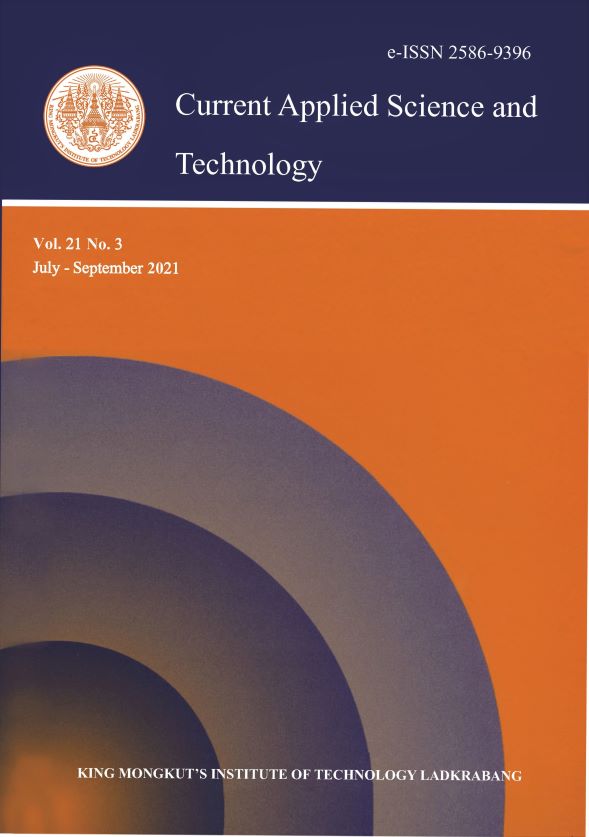Impact of Wind Speed and Direction on Low Cloud Cover over Baghdad City
Main Article Content
Abstract
Clouds are one of the best evidences for the continuous movement of the Earth's atmosphere, and they play a major role in the Earth's climate through their influence on the balance of solar radiation. Part of the falling solar radiation causes the heating of the Earth’s surface. The statistical methods used in this study depend on the daily, monthly and seasonal mean of Low Cloud Cover (LCC), Wind Speed (WS), and Wind Direction (WD), with data taken from the European Center for Medium Range Weather Forecasts (ECMWF) for the year 2018 at the times of 00.00 am, and 12.00 pm over Baghdad Station. The highest values of low cloud cover were recorded during December, January and February, while wind speed was low. The highest values of wind speed were found during June and July at 12:00 pm. As for the seasonal analysis, it was noted that the LCC was high during winter and autumn. The relationship between wind speed and low cloud cover was also found to be inverse; the higher the wind speed, the lower the cloud cover.
Keywords: low cloud cover; wind speed; wind direction; ECMWF; Baghdad
*Corresponding author: Tel.: +964 7702642680
Email: osamaaltaai77@uomustansiriyah.edu.iq
Article Details
Copyright Transfer Statement
The copyright of this article is transferred to Current Applied Science and Technology journal with effect if and when the article is accepted for publication. The copyright transfer covers the exclusive right to reproduce and distribute the article, including reprints, translations, photographic reproductions, electronic form (offline, online) or any other reproductions of similar nature.
The author warrants that this contribution is original and that he/she has full power to make this grant. The author signs for and accepts responsibility for releasing this material on behalf of any and all co-authors.
Here is the link for download: Copyright transfer form.pdf
References
Yau, M.K. and Rogers, R.R., 1996. A Short Course in Cloud Physics. 3rd ed. Burington: Butterworth-Heinemann.
Ahrens, C.D., 2011. Essentials of Meteorology: an Invitation to the Atmosphere. 6th ed. Boston: Cengage Learning.
Orville, H.D., Farley, R.D. and Hirsch, J.H., 1984. Some surprising results from simulated seeding of stratiform-type clouds. Journal of Applied Meteorology and Climatology, 23(12), 1585-1600.
Abodi, H., Thari, N. and Abbas, N., 2016. The relation between cloud cover and some atmospheric variable over Baghdad city. Global Journal of Advanced Research, 3(4), 283-289.
Haberichter, K.M., 2017. Comparison of Wind Speed, Soil Moisture, and Cloud Cover to Relative Humidity to Verify Dew Formation. Meteorology Senior Theses. Iowa State University.
Marlina, N. and Melyta, D., 2019. Analysis effect of cloud cover, wind speed, and water temperature to BOD and DO concentration using QUAL2Kw model (case study in Winongo river, Yogyakarta). MATEC Web of Conferences, 280, 05006, https://doi.org/10.1051/ matecconf/20192800500
Janeiro, F.M., Carretas, L., Kandler, K., Wagner, F. and Ramos, P.M., 2014. Advances in cloud base height and wind speed measurement through stereophotogrammetry with low cost consumer cameras. Measurement, 51, 429-440.
Abbood, Z.M. and Al-Taai, O.T., 2018. Calculation of absorption and emission of thermal radiation by clouds cover. ARPN Journal of Engineering and Applied Sciences, 13(24), 9446-9456.
Abbood, Z.M. and Al-Taai, O.T., 2018. Study of absorbance and emissivity solar radiation by clouds, aerosols and some atmospheric gases. Journal of Applied and Advanced Research, 3(5), 128-134.
Abd, H.F., 1997. Frequences of Wind and Its Relationship to Cloud Cover in Geography Department. Baghdad University.
Dahiru, T., 2008. P-value, a true test of statistical significance? A cautionary note. Annals of Ibadan Postgraduate Medicine, 6(1), 21-26.
Padua, D., 2000. The fortran I compiler. Computing in Science & Engineering, 2(1), 70-75.
Williams, F. and Monge, P.R., 2001. Reasoning with Statistics: How to Read Quantitative Research., 5th ed. Fort Worth: Harcourt College Publishers.
Tuğran, E., Kocak, M., Mirtagioglu, H., Yigit, S. and Mendes, M., 2015. A simulation based comparison of correlation coefficients with regard to type I error rate and power. Journal of Data Analysis and Information Processing, 3, 87-101.
Wang, G.J., Xie, C., Chen, S., Yang, J.-J. and Yang, M.-Y., 2013. Random matrix theory analysis of cross-correlations in the US stock market: Evidence from Pearson’s correlation coefficient and detrended cross-correlation coefficient. Physica A: Statistical Mechanics and Its Applications, 392(17), 3715-3730.


